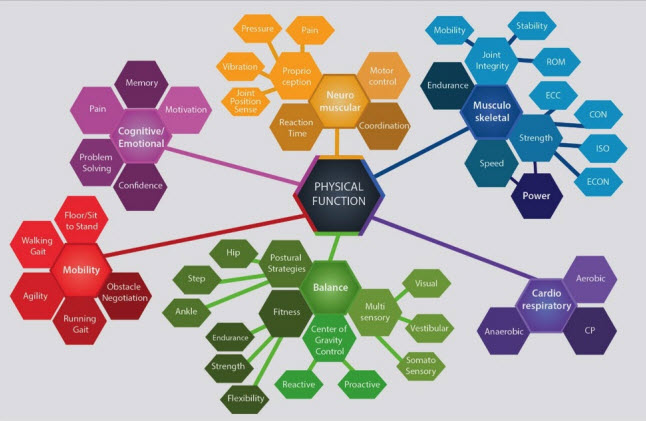In the process of working on my doctorate in gerontology, I discovered, rather than studying physical health, I was more interested in understanding and evaluating the mental, emotional and spiritual health of people who were getting up in age. I collected and analyzed data to learn more about the participants’ experiences with their life crises, how they responded to a particular crisis, coped with the crisis or learned from the crisis, and how they had applied this learning to their later lives. By understanding the importance of these other areas you will become more effective working with mature clients.
Our satisfaction with life and our self-esteem are on average as high in old age as they are at any other time in adulthood. As we age, our earlier expectations of life change and more and more come to match our current realities. We become in some ways wise, mellow and more able to enjoy the present moment.
As people grow older and have fewer years left, they become more concerned about enjoying the present and less concerned with activities that prepare for the future. Less time, attention and energy are devoted to casual acquaintances, long-term marriages grow closer, and partners enjoy each other more and spend less time trying to improve, impress and dominate each other. Ties with family and old friends grow closer while social networks shrink in size. Surveys show that our fear of death typically peaks in our fifties but lessens as we age. Older individuals are less fearful of death, more likely to accept it because they know they have lived a full life.
Life changing processes in human development have been studied for years. Erik Erikson was one of the pioneers of this research, and he believed adults continue to grow and mature throughout their entire lives, not just the early years. Erickson believed wisdom is the end result of any healthy crisis resolution and is evident in a person’s proverbially seeing the glass half full rather than half empty. Wisdom has been considered from the earliest of times the pinnacle of human development because of its positive qualities and its helping us to understand the life we have had, the life we have, and life in general.
Taking Action
Believing that one’s efforts can influence an outcome increases the likelihood of the person’s actually selecting goals to act upon, investing the necessary time and energy in achieving those goals, and experiencing a personal sense of well-being. The basis for healthy growth in all stages is that as long as people try, they can succeed. A wise person weighs the known and unknown and resists overwhelming emotion while taking appropriate action. Successful aging was found to be an end result for those who had coped well, found an opportunity and proactively dealt with their stressors. Personalities that were more confident had positive beliefs, assertive behaviors, and, in the end, enjoyed themselves more. Not taking action, on the other hand, or deflecting responsibility for their actions prevented individuals from learning, from introspective analyses, and frustrated the potential of their futures.
Action must be taken for learning to occur. Real change takes place from the inside out. Once individuals begin to recognize the ineffective methods they have used in their lives to cope with the stress of challenges, they can begin to correct the faulty methods and make positive changes. Those who choose to take control of their lives take action. They work on things they can do something about.
Each of us must take the initiative and responsibility to make things happen. And making things happen keeps us from seeing ourselves as victims and helps us to move from reactive to proactive behaviors. In this way, purposefully reconnecting with the self enriches a person’s life experience and helps people learn to be their real-selves. In fact, data from my research concluded that being one’s real-self was a desire that three-fourths of the participants acted upon after their first crisis. They learned that to be truly happy, they had had to follow their hearts, to be themselves, and they learned that real joy in life did not come from their trying to be what everyone else wanted them to be.
While the majority of the participants believed that each day should be lived to the fullest, they all expressed it in different ways. Some suggested that living each day to the fullest is a way of practicing gratitude for the life they have. Others indicated that even after the earlier crisis, their awareness of the value of living each day to its fullest became more clear.
But, to change requires flexibility. Deepak Chopra indicates that flexibility can reverse biological aging and that flexibility comes from letting go of attachments and being resilient when facing inevitable challenges in life. The crisis itself may not be forgotten, but the sense of urgency to change is remembered. Healthy forgetfulness involves moving on, but only after the appropriate changes have been made. If there is no change, there is no moving on.
After a crisis occurs, and the coping is completed, and time passes, individuals have choices. They come to a crossroad at which they must choose between continuing life as it had been or moving on to what the future promises.
Virtually all research data suggests that moving on with one’s life is the appropriate action to take once the value of embracing change has been established. There was a letting go of some kind for all who wish to be the most complete version of their true selves, and there is a period of grieving for what is left behind or let go of, but those who move from the past to the present eventually acquire hope for the future.
Purpose
Successful aging is a result of a balanced exchange of energy between the individual and the social system in which the individual finds himself or herself. Almost all older persons living in private homes engage in some form of productive activity. Freud indicated that love and work are essential to successful living. Sadly, many retired elders have lost their sense of purpose and productivity and feel cynical, bored and empty. The definition of work is larger than the job and thus suggests work is not governed by a paycheck or a time clock. Work might include weeding a garden, baking bread, teaching a skill, or volunteering in one’s community.
Having a purpose in life has been found to create a passion for life and gives meaning to life. Older individuals who still believe they can improve themselves need a sense of creative tension that cancels out the lack of challenge and depression that has been found to cause disease. Thus, the key to successful aging is to redefine our purpose and move from a self-centered world to an altruistic world of caring for fellow human beings. The challenge is to find that kind of caring that creates a sense of aliveness and purpose in us, to find what stimulates us to continuing growing and developing our better selves.
Satisfaction with one’s life was found to be predicated on our sense of having achieved our goals, be they socioeconomic status, employment or self-actualization. Yet, many healthy and happy elders had to re-create their definition of success from security, advancement and retirement to greater commitments to family, community, nature and spiritual growth. To make a contribution is one of the most popularly cited reasons for why people choose their work, and the reward for giving to something larger than themselves is not only valuable to others but also invaluable to the giver. It is not enough to be kept busy, study participants reported, but that their work had to be directed toward some pragmatic end, to help others or themselves, in order for the work to have meaning.
Well-Being
Self-worth and confidence are components of well-being and personal happiness. Successfully moving through crises, learning life’s lessons and acquiring the wisdom necessary to create an improved self, increases our sense of well being and happiness and leads to a healthy sense of self-worth.
Growing old is an enriching experience that involves our appreciation of our personal significance and our coming to terms with losses and changes. Personal growth is just that, a maturation of the self, which evolves or is spirited on in many ways, through introspection, the altering of values and perspectives, and action. By committing ourselves to being our best selves, we help ourselves and everyone around us.
By knowing why you are, and who you are, you can begin to make yourself into the person you want to be.
Dianne McCaughey, PhD
FAI Advisory Board Member





